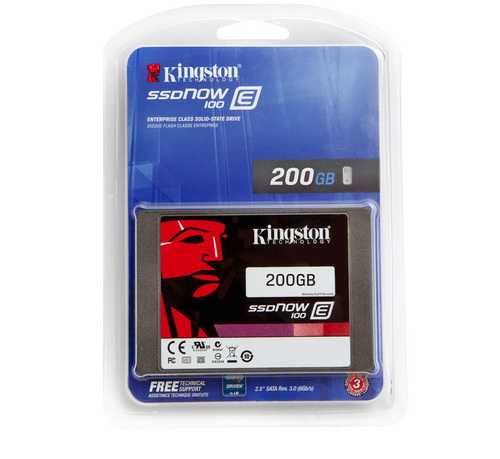INTRODUCTION

As some of my friends have pointed out recently i may have been doing SSD reviews for slightly over 5 years now (roughly 6) but although a large number of consumer oriented models have landed in my hands i can't say the same about enterprise/industrial grade models and so in the following months we will do our best to try and fix that. We already started by testing the SSDnow E50 100GB SSD by Kingston a couple of weeks ago a drive which offered very good read/write speeds with the data safety only an enterprise grade product can offer. However the E50 is not the flagship SSD model in the Kingston SSDnow line and so we decided that it would be in everyone’s best interest to get the top of the line E100 200GB variant (although quite older) and see not only how it does against its smaller brother the E50 but also against every single SSD in our charts.
Kingston Technology Company, Inc. is the world’s largest independent manufacturer of memory products. Kingston designs, manufactures and distributes memory products for desktops, laptops, servers, printers, and Flash memory products for PDAs, mobile phones, digital cameras, and MP3 players. Through its global network of subsidiaries and affiliates, Kingston has manufacturing facilities in California, Taiwan, China and sales representatives in the United States, Canada, Europe, Russia, Turkey, Ukraine, Australia, New Zealand, India, Taiwan, China, and Latin America.
The main differences between the E50 and E100 models lie with the flash controller and the NAND flash modules since whereas the E50 wears the SF-2581 controller by LSI/SandForce paired with 19nm MLC NAND flash modules by Toshiba the E100 makes use of the more advanced SF-2582 controller by LSI/Sandforce which in this case is paired with 32nm MLC NAND flash modules again manufactured by Toshiba. Of course the E50 hardware configuration makes use of the latest generation 19nm MLC NAND flash modules by Toshiba which although may indeed be faster and cooler compared to the 32nm ones are far less durable (3 DWPD for the E50 vs 11 DWPD for the E100 - Drive Writes Per Day). The LSI/SandForce SF-2582 controller is also quite more improved compared to the SF-2581 and features DuraClass (life and speed optimizations), DuraWrite (intelligent block management, wear leveling, read disturb management and garbage collection) and RAISE (intelligent data retention optimization and best-in-class ECC protection for longest data retention and drive life) technologies paired with end-to-end CRC protection and ECC recovery. To complete the set of features Kingston has once again used a set of Tantalum capacitors which can act as a failsafe for accessed data in the event of a power loss. Just like with the E50 we don't expect the E100 to be king of the hill in terms of read/write performance but we do want to see what potential buyers can really expect from it.

 O-Sense
O-Sense







.png)

